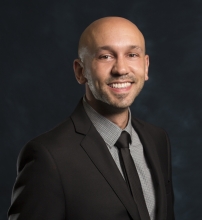CEE Seminar (ZOOM): Evaluation of Post-Earthquake Functional Recovery of Tall Buildings

Associate Professor
Department of Civil and Environmental Engineering
College of Engineering and Computer Science
California State University, Fullerton

Vesna Terzic, Ph.D.
Associate Professor
Department of Civil and Environmental Engineering and Construction Management
California State University, Long Beach
Abstract: At this seminar, i will present a detailed evaluation of the functional recovery of a typical reinforced concrete core wall building located at a site of high seismicity using a newly developed, fully probabilistic and comprehensive analytical framework for the assessment of post-earthquake functional recovery of buildings. This innovative framework allows complete and detailed evaluation of the seismic performance of tall buildings considering all structural and nonstructural building components/systems, and the calculation of performance metrics relevant for the assessment of functional recovery, including building’s post-earthquake functionality along with the duration and path of functional recovery. A nonlinear model of the building is created in OpenSees using a recently developed three-dimensional macro model for RC walls. Building seismic response is obtained for three seismic hazard levels corresponding to Service-Level Earthquake (SLE), Design-Based Earthquake (DBE), and Maximum Considered Earthquake (MCE). Building seismic performance obtained using new, advanced structural and recovery models suggest that the post-earthquake functionality of the tall building is primarily governed by the structural subsystem. In particular, for SLE, the functionality of the building is compromised mostly due to the damage to shear walls resulting in three to six months of functional recovery time (FRT); for DBE, the building’s functionality is fully impaired due to significant damage to slab-column connections and shear walls (FRT = 8 to 13 months); and for MCE, the building’s functionality is fully impaired due to significant damage to slab-column connections, shear walls, coupling beams and partition walls (FRT = 12 to 16 months).
Bio: Kristijan Kolozvari is an associate professor in civil engineering at California State University, Fullerton. He received his bachelor's degree from the University of Belgrade, Serbia, and his master's degree and doctorate from UCLA. His professional and research expertise is related to structural/earthquake engineering, with a focus on development and applications of advanced nonlinear models for RC structures, performance-based seismic design, tall buildings design, seismic resiliency, and structural instrumentation and experimental testing. Kolozvari developed several publicly available OpenSees classes widely used for analysis of reinforced concrete structures. He has been a co-PI on several research projects funded by the National Science Foundation, the Charles Pankow Foundation and several industry partners. Kolozvari serves on peer review panels for projects that involve performance-based design of tall buildings, where he participated to date in 50+ projects along the West Coast of the United States. He is an active member of the Los Angeles Tall Buildings Structural Design Council, the ACI 374 committee, ANSS USGS Committee and in several collaborative international research projects. Kolozvari is a recipient of the 2019 SB Barnes Research Award for his contribution to the Soft-Story Wood Retrofit Research study that he coauthored as a member of the Existing Buildings Committee of Structural Engineering Association of Southern California.
Share
Upcoming Events
-
MSE 298 Seminar: Translational Neuroelectronics
-
CBE Seminar: Water Structure and Computational Design of Water-mediated Solute-surface Interactions
-
CEE Ph.D. Defense Announcement: Ultra-High-Ductility and High-Strength Cementitious Materials for Advanced Manufacturing of Structures
-
CALIT2 Distinguished Lecture: Strategic Directions for Electronics Packaging
-
MSE 298 Seminar: Science-Based Advanced Manufacturing of Metals and Alloys
